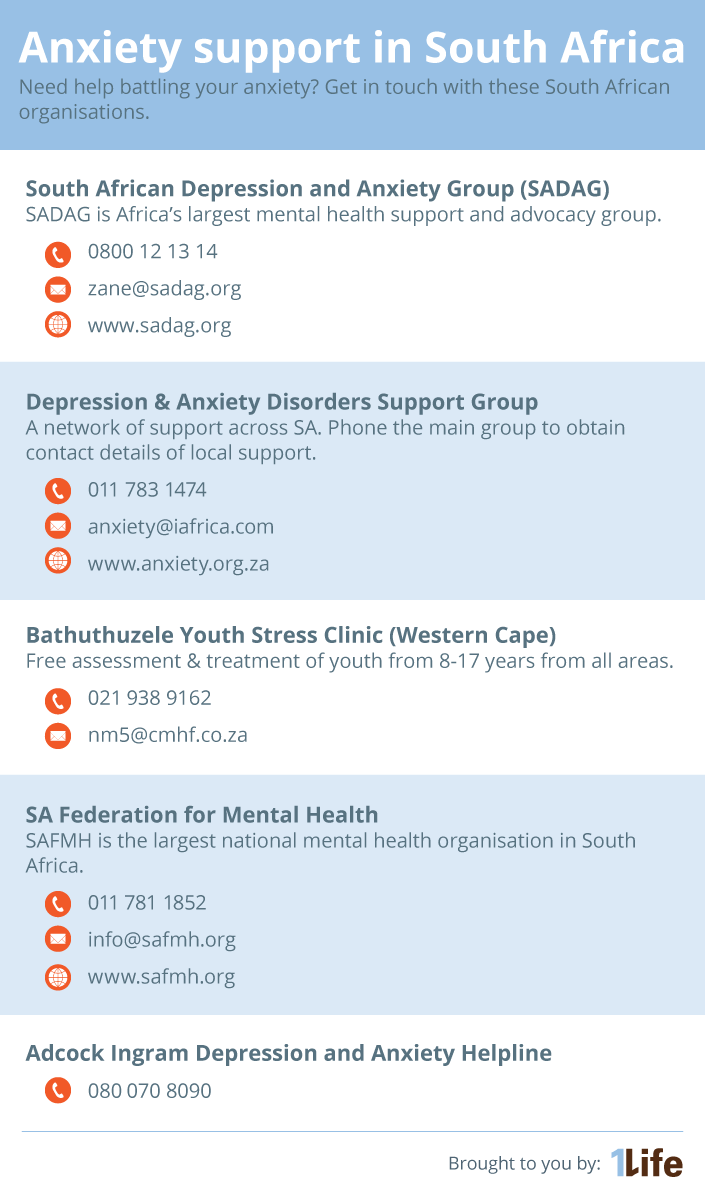Anxiety is a terrible feeling – that rapid heartbeat, the tight throat, the shaking and the sense of impending danger. Anxiety can be a general feeling, or it can be about a specific event or situation. It’s normal to worry about life’s challenges, but it can be a problem if the feeling is excessive or long-lasting, or if it intrudes on sleep or on daily life. Some people are more prone to feeling anxious than others. If you find that you experience frequent bouts of anxiety, here are some exercises that you can do to take control of your mind and body, so that you can channel your energy into more productive outlets.
VisualisationWhen your mind is consumed with worry, try to give it something else to focus on. Try to replace your negative ruminations with a positive mental image. This takes some discipline, because the worry cycle is consuming and it’s easy to fall back into your negative thoughts. But if you work at identifying your “happy place” – a beach, a forest or a reading nook where you feel safe and happy – and try to summon it up in your mind’s eye whenever you are feeling anxious, you can find that it becomes easier to distract yourself from the rising panic.
Here is a detailed explanation of how to use visualisation to beat anxiety.
The trick is identifying songs that make you happy or relaxed
Engage your earsIf you find that you are stuck in an anxiety cycle, you can use music to break you out of it. According to Dr David Lewis-Hodgson of Mindlab International, specific songs could cause a reduction in anxiety of up to 65%. The trick is identifying songs that make you happy or relaxed – so you might not use the same music for beating anxiety as you would to motivate you for an intense workout at the gym.
The song that proved most effective in the Mindlab study was “Weightless” by Marconi Union, which was composed to help slow a listener’s heart rate, reduce blood pressure and lower their levels of cortisol, which is the stress hormone. But any relaxing or uplifting music might help distract you from your worries or improving your mood.
Here’s a science-backed list of the top ten anxiety-beating tracks.
Ground yourselfAn approach known as the “3-3-3 Rule” helps to pull you away from your complicated thoughts and back into the here and now. The first step, according to Tamar Chansky, PhD and author of Freeing Yourself from Anxiety, is to look around you and name three things you can see (you don’t have to do this aloud). Then name three sounds you can hear. And lastly, move three parts of your body in succession – your ankles, your fingers, your wrists or your shoulders. Many people find that this process helps to focus on something else, and still their mind.
Schedule your worryingIt’s possible to trick your brain into letting go of its anxiety by scheduling it for later. If something is really bothering you, but no solution is in sight, make a note of it, so you can be sure to get to it. This is particularly helpful when worrying is preventing you from sleeping. The knowledge that it’s written down can allow your brain to move on to other things. And when the allotted “worry time” approaches, the brain goes into “solve” mode without competing with other distractions.
Writing it down is also helpful in another way. It helps you to externalise the concern and allows you to consider whether worrying about it later will be productive or not. Are you actually finding a solution for the problem, or are you simply stressing yourself out by thinking the same thoughts over and over? Sometimes, identifying the fruitlessness of the worry can help you to let it go.
Just breatheAnxiety is associated with rapid, shallow breathing, which in turn can make you feel even more anxious. Take control of this vicious cycle by regulating your breathing. The simplest approach is to take slow, deep breaths, but this isn’t always enough to refocus your mind and calm you down. Instead, you can look at a calming breathing process such as “square breathing”. Square breathing involves breathing in for four counts, holding for four counts, out for four counts and holding for four counts, then repeating. Each count of four is the side of a square. Following a routine gives your mind something to do, and the deep, regular breaths help to calm you down and slow your heartbeat.
Watch the caffeineThat caffeine buzz you crave? It can also be making you feel anxious, jittery or downright panicky. While most people can tolerate a cup or two before lunch, and up to four cups is considered safe for a healthy adult, for people prone to anxiety or those sensitive to caffeine, your daily coffee fix can be contributing to your problems. If you think caffeine could be adding to your anxiety (or your insomnia) consider cutting it out. Push through the withdrawal headaches and see if anxiety raises its ugly head less often.
Be kind to yourselfPeople who suffer from anxiety can often feel overwhelmed by life. Try to get your worries under control before they spiral out of control. And while all the solutions that we’ve mentioned can make a big difference, if you feel that your anxiety is taking over your life, don’t be afraid to ask for support or seek professional help.





